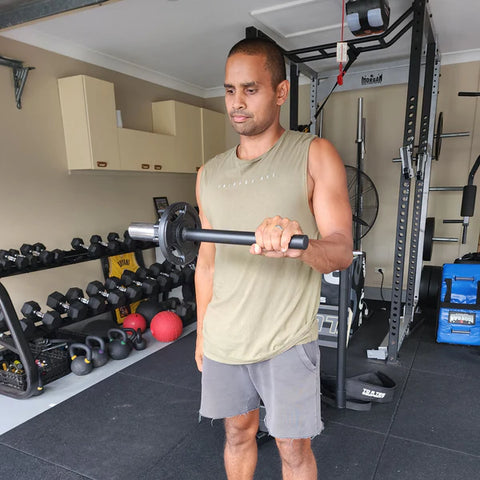Ankle mobility is often an overlooked aspect of fitness, but it plays a crucial role in overall movement mechanics, athletic performance, and injury prevention. Limited ankle dorsiflexion (the ability to bend your ankle upwards) can restrict your range of motion, lead to imbalances, and put stress on your knees.
This is where Tib Raises and Tib Bars Raises come in. Let's delve into why these elements should be a part of your mobility and strength training routine.
The Power of Tib Raises:
Tib Raises are a simple yet highly effective exercise that targets the Tibialis Anterior muscle, located on the front of your shin. Here's what they can do for you:
-
Improved Ankle Dorsiflexion: Regular Tib Raises strengthen the Tibialis Anterior, allowing for a greater range of motion in your ankle joint. This translates to deeper squats, lunges, and better overall movement mechanics.
-
Enhanced Stability and Balance: Strong and mobile ankles contribute significantly to overall stability and balance. This is crucial for activities like walking, jumping, and changing direction quickly.
-
Reduced Injury Risk: Tight and inflexible ankles are more prone to injuries like shin splints, ankle sprains, and plantar fasciitis. Tib Raises strengthen the muscles surrounding the ankle joint, improving its resilience and reducing the risk of injury.
-
Improved Athletic Performance: Many athletic activities rely heavily on proper ankle mobility. Tib Raises can help athletes achieve a wider range of motion, leading to better power transfer from the legs to the ground, resulting in improved jumping ability, quicker acceleration, and overall enhanced performance.
-
Pain Relief: Limited ankle mobility can contribute to pain in the feet, shins, and even knees. By improving flexibility and strengthening the muscles around the ankle joint, Tib Raises can help alleviate pain caused by tightness or weakness in this area.
Tib Raises: Bodyweight vs. Tib Bar
While you can perform effective Tib Raises using just your bodyweight, a Tib Bar can elevate your training by offering several advantages:
-
Measurable Load: Unlike bodyweight Tib Raises, a Tib Bar allows you to progressively overload the exercise by adding weight plates. This is crucial for continued strength gains and muscle development in the Tibialis Anterior.
-
Improved Foot Positioning: The angled design of a Tib Bar encourages proper foot placement, ensuring targeted activation of the Tibialis Anterior during Tib Raises.
-
Enhanced Comfort: Many Tib Bars feature padded footplates, providing a more comfortable experience during your workouts.
Who Can Benefit from Tib Raises and a Tib Bar?
These exercises are valuable for a wide range of individuals:
-
Athletes: Improved ankle mobility and strength can enhance athletic performance in various sports.
-
Fitness Enthusiasts: Tib Raises and a Tib Bar can help you achieve deeper squats and lunges, improve overall mobility, and reduce the risk of injury.
-
Anyone with Limited Ankle Mobility: Regular Tib Raises can help increase your ankle dorsiflexion range of motion, leading to better movement and potentially preventing pain.
Incorporating Tib Raises into your routine is a simple yet potent way to improve ankle mobility, strengthen your lower legs, and elevate your overall movement health. For those seeking further progression and targeted activation, a Tib Bar can be a valuable addition to your training arsenal.
Ready to unlock the full potential of your ankles? Start incorporating Tib Raises and consider using a Tib Bar to take your mobility and strength training to the next level!
Additional Tips:
- Consult a healthcare professional for personalised guidance on Tib Raises and Tib Bar use, especially if you have any existing ankle injuries.
- Research proper Tib Raise form to ensure you're targeting the intended muscle effectively.
- Start with bodyweight Tib Raises and gradually progress to weighted Tib Raises with a Tib Bar as your strength improves.
By prioritising ankle mobility and incorporating these exercises into your routine, you can move with greater confidence, reduce your risk of injury, and potentially unlock new levels of performance in your fitness journey
